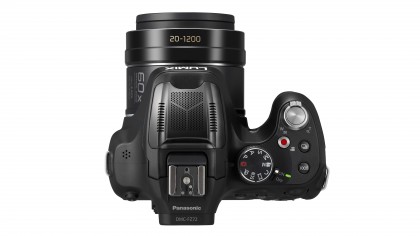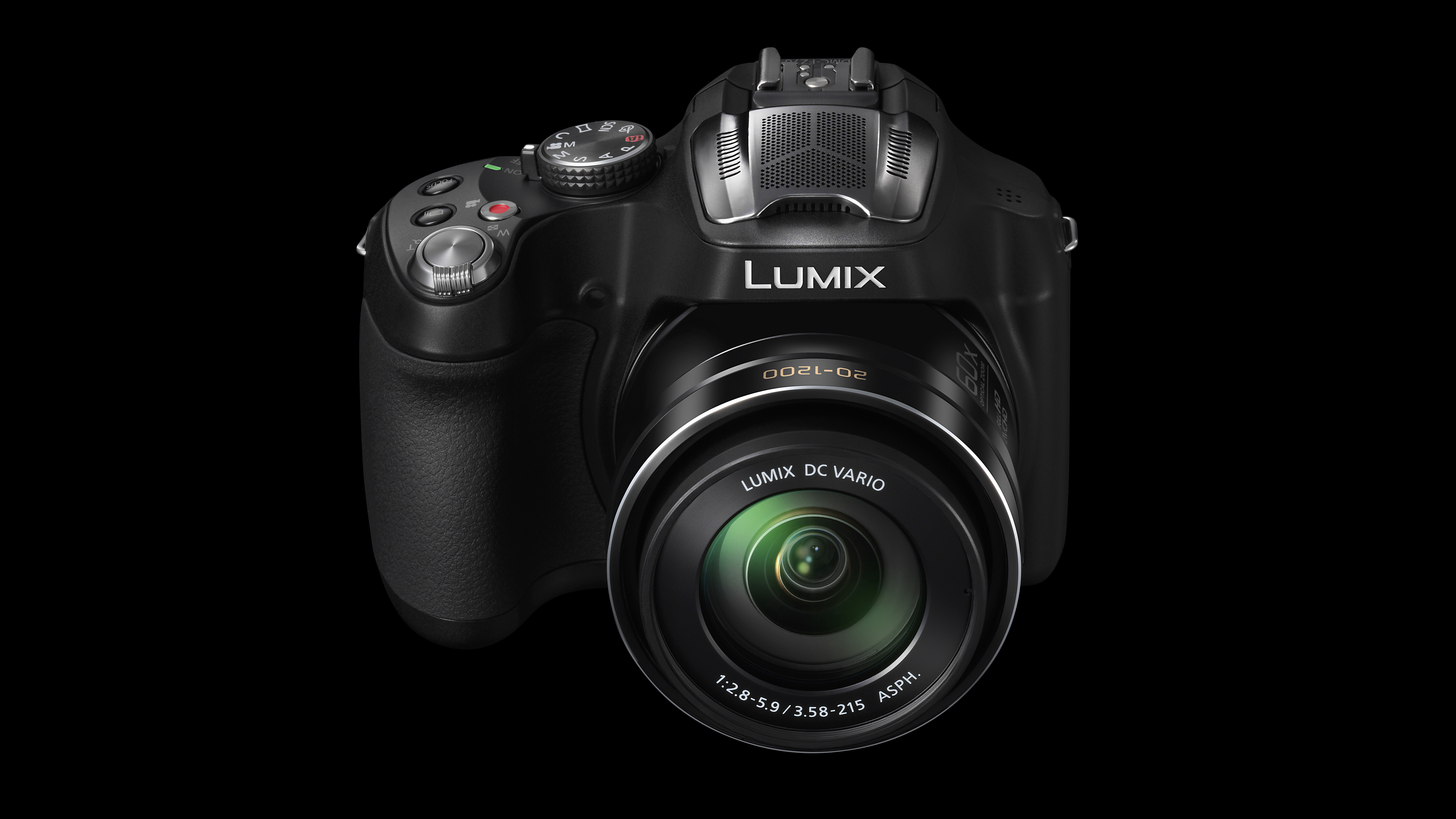Why you can trust TechRadar
Very much styled in a DSLR fashion, the FZ72 could be mistaken for an entry-level model in the same vein as a Nikon D3200 at first glance. It has a larger than average lens for a bridge camera, which is unsurprising considering its enormous zoom range.
A chunky hand grip to the side of the camera is useful when shooting one-handed, while the rubberised coating makes it feel especially secure in the hand and gives it a high quality feel at the same time.
Fans of direct access dials and buttons should find lots to like about the FZ72, as the lack of a touchscreen means that the entire operation of the camera is carried out via the various buttons available.

On top of the camera is a mode dial for quickly switching between the various exposure modes available, including fully automatic, shutter priority and aperture priority, creative modes, scene modes, panoramic mode and movie mode. There's also space here for a group of custom settings, which is a useful touch if you often find yourself shooting in one particular scenario, such as low light.
On the back of the camera is a four way navigational dial, which gives you quick access to ISO, white balance, drive mode and a customisable function button. It's also used to navigate around the menu system, or when selecting an autofocus point.
A quick menu is also included for accessing commonly used settings, such as file type, colour and metering, this is accessed via a dedicated button to the bottom right of the back of the camera, which doubles up as a delete button when playing back images.
To switch between different focusing kinds, such as autofocus, autofocus macro and manual focusing, another dedicated button is found on the back of the camera. Another button can either be used as a customisable function button or as the AF/AE lock button. Burst shooting can be activated via a button on top of the camera, and up to 9fps is available. Clearly Panasonic has thought about how people like to use an advanced camera, and has included a decent range of buttons and customisation.
Up to your eye
The camera's electronic viewfinder doesn't have a sensor for automatically detecting when the camera is lifted to your eye, which is unfortunate as it makes the process a little disjointed. Instead, you will need to push the LVF button to switch it on – and off again.
Activating the pop up flash is a simple case of pressing a dedicated button on the back of the camera. Pushing this up will activate automatic flash, so you will need to push the flash back down again to switch it off completely.
A scrolling dial at the top of the thumb rest at the back of the camera is used to alter aperture or shutter speed, depending on the mode you're working in. If you push the dial in, it can then be used to alter exposure compensation when shooting in aperture priority or shutter priority. When in fully manual, pushing in the dial will switch between altering aperture and shutter speed.
Huge zoom, small switch
To zoom in and out of the FZ72's extensive 60x zoom range, a small switch around the shutter release button is used. Zooming is fairly quick and fluid, although with such a long range, getting to the full 60x is less than instant. One useful function which is found in the full menu is the 'zoom resume' feature, which means the camera will power up at the same zoom length it was at when you switched it off.
Unfortunately, although there are 23 autofocus points available on the camera, you can't choose them for yourself. Instead, you can pick between Face Detection, AF Tracking, 23-Area and 1-Area focusing. By choosing the 23-Area option, the camera will automatically pick a point to use. If you want more flexibility, the best option you have is to choose 1-Area, which is the centre point, and focus and recompose. It seems a bit unusual that a camera that is so otherwise enthusiast friendly doesn't offer this as an option.
If you've used any Panasonic cameras before, such as other Lumix compacts or even the Lumix G compact system cameras, you'll be more than at home with the menu system on board the FZ72. It's sensibly arranged, with most settings exactly where you'd expect them to be and split into three sections, one for shooting settings, one for movie record settings and other for general camera settings (such as setting the clock for example).
Amy has been writing about cameras, photography and associated tech since 2009. Amy was once part of the photography testing team for Future Publishing working across TechRadar, Digital Camera, PhotoPlus, N Photo and Photography Week. For her photography, she has won awards and has been exhibited. She often partakes in unusual projects - including one intense year where she used a different camera every single day. Amy is currently the Features Editor at Amateur Photographer magazine, and in her increasingly little spare time works across a number of high-profile publications including Wired, Stuff, Digital Camera World, Expert Reviews, and just a little off-tangent, PetsRadar.

